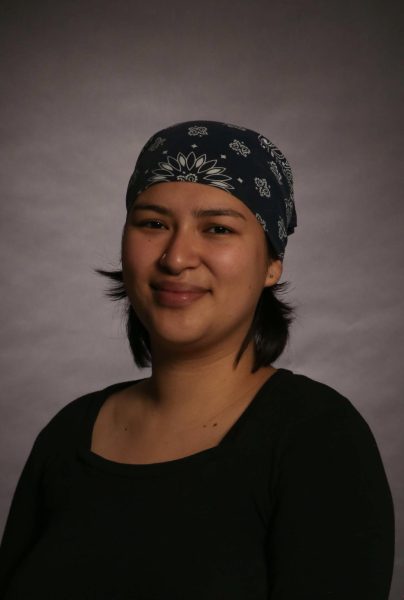



Lecture faculty make nearly ⅓ less than tenure and tenure-track faculty at SF State even though they teach more courses
June 30, 2023
Communication studies lecturer professors at San Francisco State University are raising concerns over what they perceive as an unfair wage disparity, as tenure and tenure-track faculty reportedly earn nearly twice the salary of their lecturer counterparts.
According to a piece published by Golden Gate Xpress in Nov. 2022, lecturers make up about 60% of faculty on campus. Lecturers teach almost 15 units per semester, while tenure and tenure-track faculty only teach about two classes yet are paid more than the lecturers. Tenure and tenure-track professors teach the majority of graduate and upper-division courses. This may vary depending on the department at SFSU.
To become a tenure or tenure-track faculty member, one must first acquire a Ph.D., which SFSU does not offer in most departments. This causes many professors to settle with a terminal degree or a Master of Fine Arts because it’s the highest education they can obtain at SFSU. Tenure and tenure-track faculty have priority over which classes to teach, meaning lecturers sometimes have their courses taken away or cut if they don’t meet the minimum requirement of 15 students.
According to Suzanne Pullen, a lecturer at SFSU since 2008, COMM 150 is one of the golden four classes and has between 40-50 sections every semester. It is one of the required classes listed under Area A1 of oral communication for students in their lower-division general education courses.
“I’m teaching 10 classes a year versus my tenure faculty colleagues that only teach four, and I’m teaching the boatload of undergrads at lower division classes, so the students who are first coming in have some of the most challenges,” Pullen said. “It’s really demoralizing when you realize all of this invisible labor is not recognized. It’s not part of service, and we don’t get compensated in other ways. There’s no professional development or advancement.”
According to Pullen, tenure and tenure-track’s income is divided into three categories; 60% teaching, 20% conducting research and 20% being service to the department or campus community. Service includes attending meetings or committees, which lecturers typically don’t attend since they are not being compensated. Lecturers are only paid to teach students.
While students may struggle financially, some professors find themselves in the same spot due to student loans and living conditions in San Francisco.
“Students don’t realize that some of us are in as precarious a situation as they are financially. I’ve spent $120,000 in student loans to get my master’s degree and my Ph.D., and I have to pay those loans off,” Pullen said. “The only reason that I’m able to live in San Francisco and teach here is because I’ve lived in the same flat since I graduated from college in 1993. I’m rent-controlled and live five minutes from campus. That’s the reason I’m able to stay and live in the city.”
Pullen mentioned they applied to become a tenure faculty member but could not get the position. Pullen taught 22 units in the spring semester at SF State, SFSU’s Center for Professional and Global Engagement and the University of San Francisco.
Sage Russo, a communications studies lecturer since 2019, taught 29 units during the spring semester at SFSU, Skyline College and City College. Russo has been at SF State since the start of their collegiate career in 2009 when they entered as a freshman. Since then, Russo has earned their bachelor’s and master’s degrees at SFSU.
While Russo taught 14 units in the spring at SFSU, their classes were reduced to one in the fall of 2020.
“I’ve definitely had my classes cut all the way down,” Russo said. “I’ve had friends who have had their classes cut too and technically, we’re all entitled, but they [SF State] don’t actually have to abide by entitlement if there’s nothing to offer.”
Entitlement gives professors with the most seniority the priority of picking and choosing classes. When a tenure or tenure-track faculty member does not have two classes to teach, they can seize classes taught by lecturer faculty to satisfy their count. This leads to professors teaching at multiple colleges to make ends meet. Russo stated that this is the university’s doing, not the Communication Studies Department.
Russo believes that the lecturers on campus “run the university” and that most departments would collapse without them. They claim it is also devastating that this disparity has created a divide amongst all faculty members.
“There has been this kind of artificial divide between the work that tenure track faculty do and the work that lecturers do. My classroom is not inherently any different than a tenure-track professor’s classroom,” Russo said. “It’s caught in so much of the hierarchy that we in communication studies talk about wanting to dismantle it all the time.”
When the university closed during the COVID-19 pandemic, lecturer faculty were the first to teach in-person courses, according to Angelina Moles, a lecturer in communication studies at SFSU since 2016. She stated that tenure and tenure-track professors were given priority for online and hybrid courses.
“Lecture faculty are very expendable to the university,” Moles said. “We get our classes cut, we don’t have the same pay rates, we might be told one semester that they [SF State] won’t have any class to offer for us, and yet, they put our bodies on the line by sending us to campus first during a global pandemic, and then allow for their tenure and tenure track faculty to remain safe at home teaching online.”
Some in-person classes were available beginning in the fall of 2021, just a year and a half after the pandemic’s start. Classes are still offered online at SFSU and will continue in the upcoming fall semester.
SFSU is not at fault for the pay disparity among faculty members but rather for the CSU system, according to Moles.
“It’s very much a CSU issue and so I can’t fault SF State on their own,” Moles said. ”I think what’s hard to swallow is that SF State has such a rich history of being a place where inclusion and diversity matters, our mission statement, and we are a historic landmark for protests and activism. I think we harness that idea, yet we are committing the same atrocities and just pretending like we’re not.”


Deborah Craig • Jul 2, 2023 at 12:05 pm
Sadly so on target! This description of the Communications Studies unfortunately applies to so many other departments, including my own, Public Health. Lots of lip service to “equity” but without more equal funding those words ring hollow. Deborah Craig
J D • Jul 2, 2023 at 10:57 am
Excellent reporting! I’m a lecturer faculty from a different department and what we experience is the same across the board. I love teaching at the college level, but it’s very, very difficult to make ends meet as a lecturer in the CSU system. Full time (15 units) lecturer salary is about 50k a year – and actually getting a full time appointment is difficult. TT salaries are publicly available and are much higher. Full time for TT is 9 units because they are expected to also do service (advising, etc) and research. In reality, lecturers are expected to do these things also, while having more units to teach, hence “free labor” enters the discussion. Research is less often expected from lecturer faculty, bit for those of us who are still pursuing our PhD (on top of scrambling to survive) it’s an important step toward being accepted into a doctoral program or obtaining a PhD via publication. I want to reiterate that I love teaching and care about my students; if it wasn’t for that, I can’t imagine why I’d subject myself to working so hard, with so little return on the time and energy I invest, and so much uncertainty about my own security and ability to sustain myself.